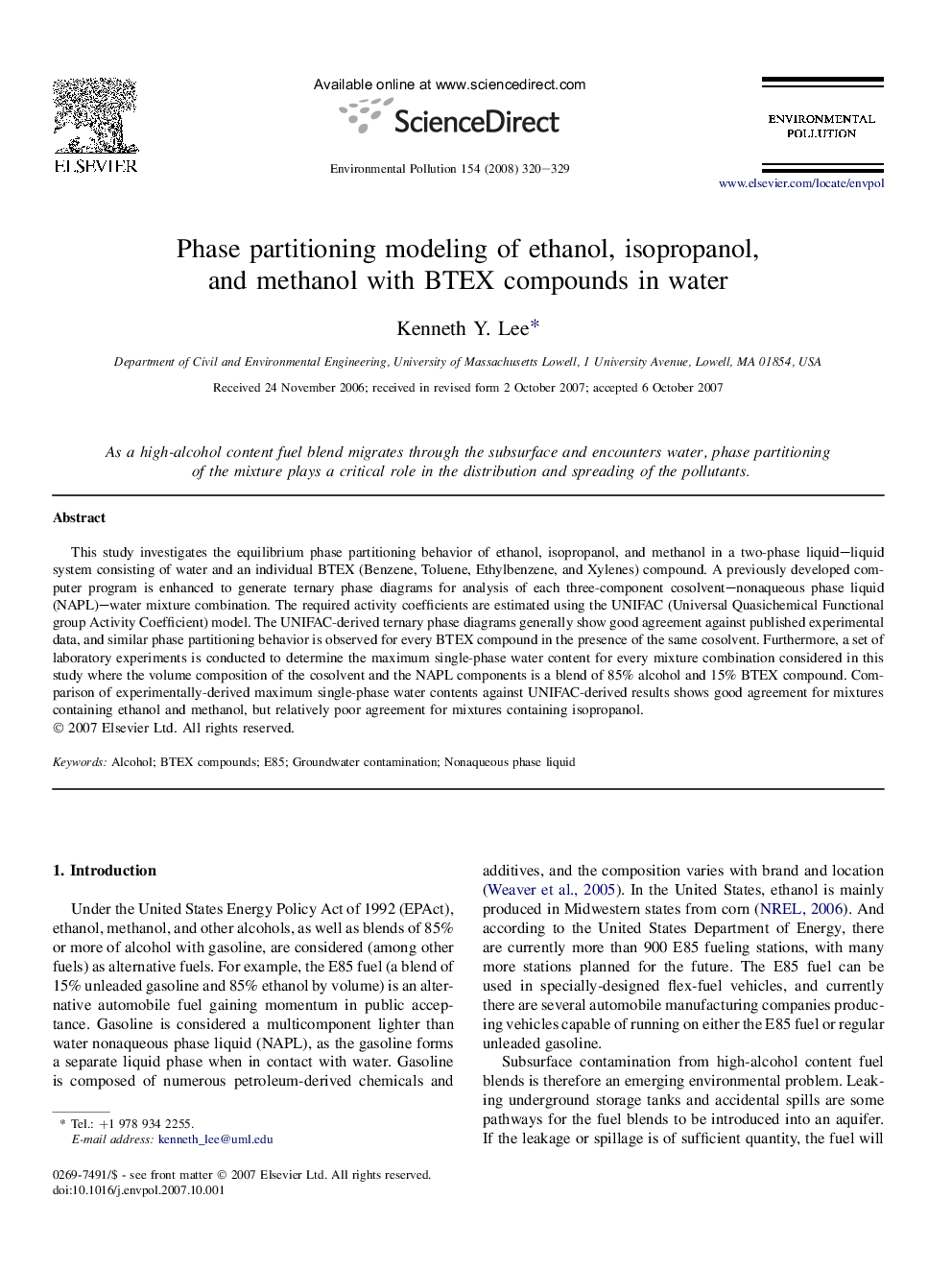| Article ID | Journal | Published Year | Pages | File Type |
|---|---|---|---|---|
| 4426663 | Environmental Pollution | 2008 | 10 Pages |
This study investigates the equilibrium phase partitioning behavior of ethanol, isopropanol, and methanol in a two-phase liquid–liquid system consisting of water and an individual BTEX (Benzene, Toluene, Ethylbenzene, and Xylenes) compound. A previously developed computer program is enhanced to generate ternary phase diagrams for analysis of each three-component cosolvent–nonaqueous phase liquid (NAPL)–water mixture combination. The required activity coefficients are estimated using the UNIFAC (Universal Quasichemical Functional group Activity Coefficient) model. The UNIFAC-derived ternary phase diagrams generally show good agreement against published experimental data, and similar phase partitioning behavior is observed for every BTEX compound in the presence of the same cosolvent. Furthermore, a set of laboratory experiments is conducted to determine the maximum single-phase water content for every mixture combination considered in this study where the volume composition of the cosolvent and the NAPL components is a blend of 85% alcohol and 15% BTEX compound. Comparison of experimentally-derived maximum single-phase water contents against UNIFAC-derived results shows good agreement for mixtures containing ethanol and methanol, but relatively poor agreement for mixtures containing isopropanol.
